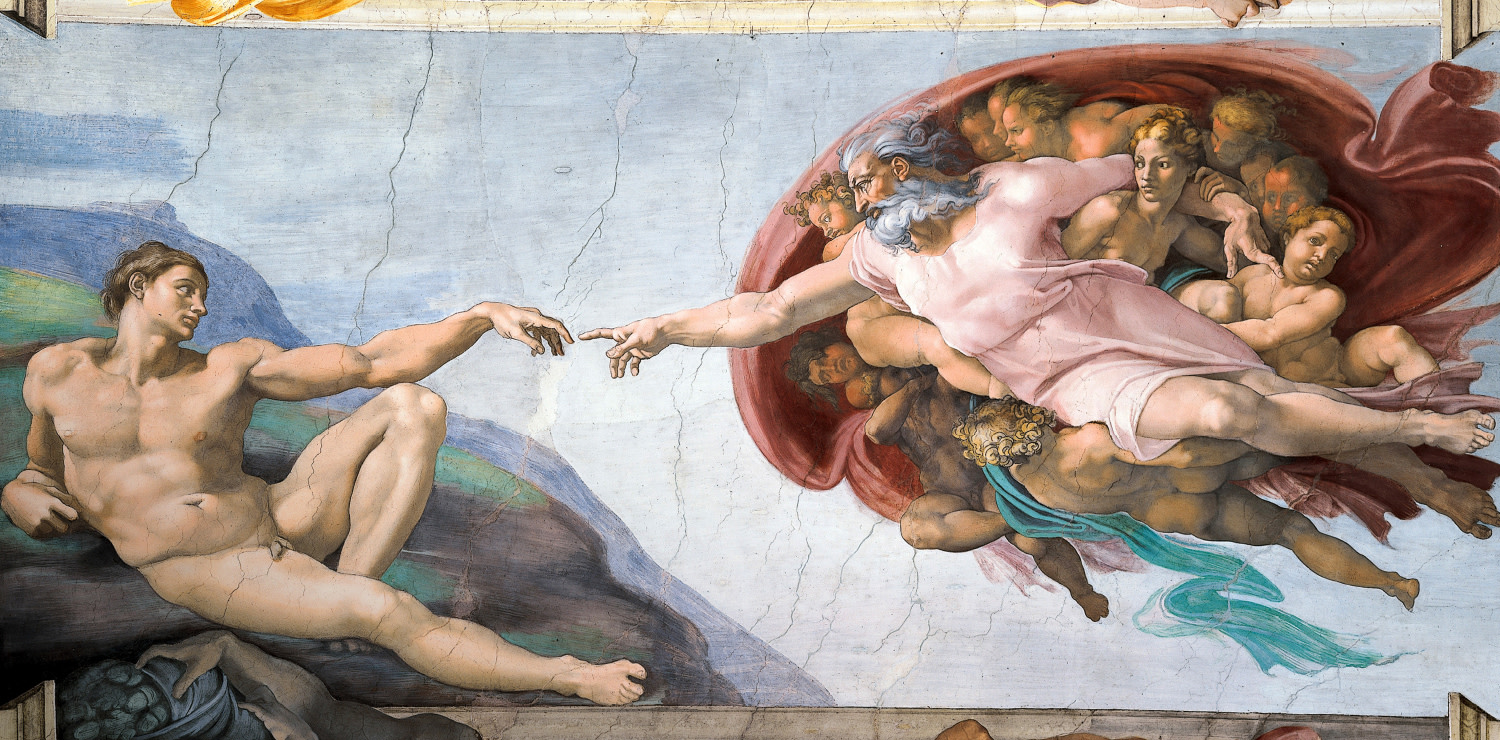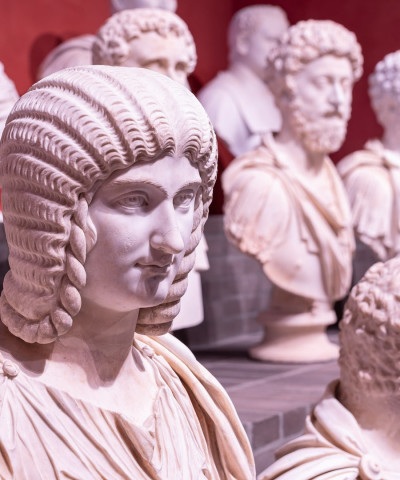10 must-see masterpieces in the Vatican Museums
A selection of works not to be missed for their artistic, historical and spiritual value
A visit to the Vatican Museums can be interpreted in a number of ways: great masterpieces of undisputed artistic value, but also works that speak of the Catholic Church’s vastly important role in the conservation of our cultural heritage. Here’s a selection of pieces you should definitely not miss.
 Cappella Sistina
Cappella SistinaTHE SISTINE CHAPEL
No need for an introduction to the Vatican’s most frequently visited work, yet it’s spine-tingling every time you enter. The absolute masterpiece of a genius, the chapel was built between 1475 and 1481 and decorated with frescoes on the ceiling and back wall by Michelangelo during the 16th century. It’s often very crowded, but if you want to see it more peacefully, come as soon as you enter the museum and keep the rest for later.
 Laocoön and His Sons
Laocoön and His Sons LAOCOÖN AND HIS SONS
Must be seen for its beauty, its location in the magnificent Octagonal Courtyard and because it was due to this statue that the Vatican Museums were founded. It was 1506 when the statue was discovered on the Oppian Hill. Pope Julius II sent Michelangelo and the architect Giuliano de Sangallo to evaluate the find, and immediately decided to acquire it. It was placed in the Octagonal Courtyard, where it stands to this day. This episode dates back to the very beginning of the Vatican Museums. Laocoön and His Sons depicts an episode from the Aeneid, and is probably a marble Roman copy made between the 1st century BC and the 1st century AD, of a bronze original sculpted in 150 BC.
 Galleria della Carte Geografiche
Galleria della Carte GeograficheTHE GALLERY OF MAPS
120 metres long by 6 metres wide; a depiction of Italy in the late 16th century. While you walk down the gallery, imagine you’re at the country’s watershed: on your left, the regions overlooking the Tyrrhenian Sea, on your right, those closer to the Adriatic. On the ceiling are the most important religious events of each Italian region. In addition to its immense artistic and geographical value, the gallery also has a strong ideological slant, because it shows us that even in the 16th century there was already the idea of an Italy united by a geographical and spiritual vision.
 Tthe School of Athens, a fresco of inestimable value painted by Raffaello Sanzio around 1509
Tthe School of Athens, a fresco of inestimable value painted by Raffaello Sanzio around 1509THE SCHOOL OF ATHENS
In one of the four rooms of the Apostolic Palace we find the School of Athens, a fresco of inestimable value painted by Raffaello Sanzio around 1509. Raphael was commissioned by Pope Julius II, who requested a scene from the classical world to represent the origins of Roman civilisation. At the centre of the painting are Plato and Aristotle, surrounded by many prominent philosopher and historical figures. An interesting fact: some of the philosophers’ faces were painted in the likeness of Raphael’s contemporaries. And in the right-hand group, you can even spot a man resembling Raphael himself; a self-portrait within a fresco.
 Belvedere Torso (ph. Valentina Stefanelli)
Belvedere Torso (ph. Valentina Stefanelli)THE BELVEDERE TORSO
An octagonal room painted in Pompei red is home to the celebrated Belvedere Torso and the statues of the Muses. The Muses were originally at the Villa of Cassius near Tivoli.
The marble torso set in the centre of the room is one of the Vatican Museums’ most famous works, and one of the most extensively studied and admired by artists from the 16th century to the present day. The statue dates to the 2nd century BC and probably depicts Ajax from the Odyssey as he contemplates suicide.
 Court of the Pigna (ph Valentina Stefanelli)
Court of the Pigna (ph Valentina Stefanelli)COURT OF THE PIGNA
The perfect spot for a break during your visit, this courtyard takes its name from the enormous bronze pine cone that occupies the large alcove on its northern side. In the centre stands Arnaldo Pomodoro’s great Sphere within a Sphere, donated by the artist in 1990. Fun fact: the sphere is not static, but has a mechanism that allows it to rotate.
 il braccio nuovo
il braccio nuovoTHE BRACCIO NUOVO
In the 19th century, the return from France of works confiscated by Napoleon necessitated a reorganisation of the papal collections, involving the construction of a new section for classical sculpture. Pope Pius VII (1800-1823) entrusted the plans for what was known as the Braccio Nuovo del Museo Chiaramonti to the Roman architect Raffaele Stern, and the building was subsequently continued by Pasquale Belli until its inauguration in February 1822. The exhibition was supervised by the Commissione di Belle Arti, chaired by Antonio Canova. An admirable example of Neoclassical architecture; the large exedra lit by skylights in the roof is home to the magnificent statue of the River Nile.
 PINACOTECA
PINACOTECAPINACOTECA
The Pinacoteca has been part of the Vatican Museums since 1932 when a building to house the art collection was commissioned by Pope Pius XI. It consists of 18 main rooms in which works are displayed in chronological order according to the school they belong to.
The first room is devoted to Italian artists in the medieval period, the second to Giotto, and the third contains works by Filippo Lippi and Fra Angelico. The subsequent rooms house paintings from the 15th century. The most important and popular rooms are Room VII with the works of Perugino; Room VIII and Raphael; Room IX and Leonardo; Room X and Venetian painting, and Room XII with works by Caravaggio.
 MUSEO ETNOLOGICO ANIMA MUNDI
MUSEO ETNOLOGICO ANIMA MUNDIANIMA MUNDI
ETHNOLOGICAL MUSEUM
In 1925 Pope Pius XI organised a great event to mark the Jubilee: the Vatican Universal Exposition, showcasing items from every part of the world touched by papal missions. The success of the exhibition persuaded the pope to turn the one-off event into a permanent exhibit called the Museo Missionario Etnologico, which was housed in the Lateran Palace until it was moved in the early 1960s to its current home in the Vatican Museums. What strikes you as you walk among the display cases is a sense of spirituality and dialogue between peoples, the feeling that ritual itself plays a key role in mutual understanding.
 Bramante’s spiral staircase in the Vatican is a bold and exciting work
Bramante’s spiral staircase in the Vatican is a bold and exciting workTHE MOMO SPIRAL STAIRCASE
Probably one of the most beautiful and most frequently photographed staircases in the world, it was built in 1929 as the monumental entrance to the Vatican Museums. It consists of two flights of stairs, one going up and the other down, which never meet; today it is only used as an exit. The Momo staircase may not be a work of art as such, but it’s definitely worth pausing before you leave.










